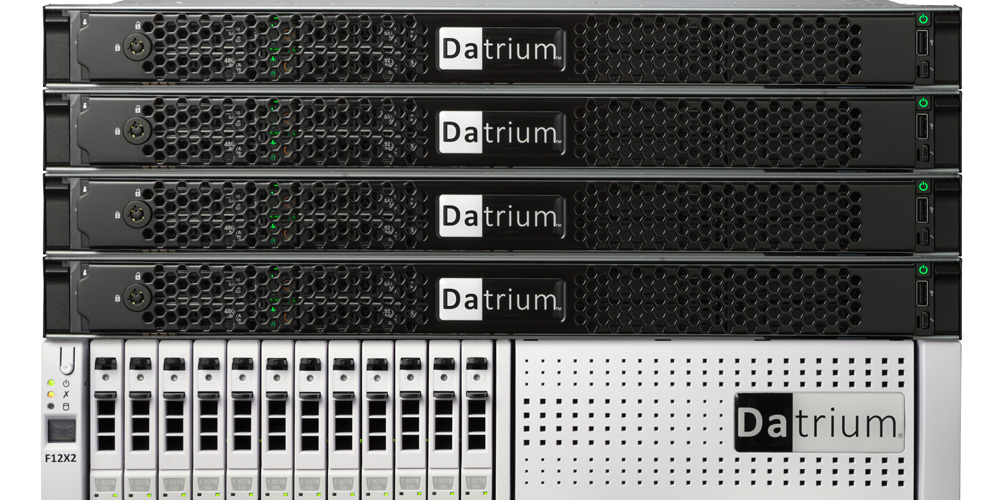Recently, I had the opportunity to ask Datrium Co-founder Ganesh Venkitachalam a few questions about Datrium, its unique solutions, and why they chose to incorporate Dell EMC OEM technology in their appliance.

Ron: Hello Ganesh, thanks for taking the time to share your story with us. Can you tell me a little about yourself, your role and the business Datrium is in?
Ganesh: I was a Principal Engineer at VMware (employee #35 if I recall correctly) in the hypervisor team. I left VMware to co-found Datrium with 4 other industry veterans from DataDomain and VMware. The Datrium founders have very different backgrounds and the company draws from this experience. I presently lead an engineering team at Datrium, but as a founder I wear many hats.
Datrium is in the business of simplifying virtualization and application deployment infrastructure end to end. HCI 1.0 converged compute and primary storage, which was a good idea – but it did not consider low latency mission critical deployments, nor infrastructure for simple/efficient backups, DR orchestration, or hybrid/multi clouds from day one. Consider us HCI 2.0 – we got the opportunity to learn what is wrong with HCI 1.0, do it right, and take it further into the heart of the data center.
Ron: Can you tell me about Datrium’s DVX Solution? What challenges are you helping customers solve with the platform?
Ganesh: One of the biggest problems in the IT industry is complexity – there are silos and separate domains for the primary workload and backups/DR orchestration. Worse yet, the public cloud has not simplified any of this, it has become yet another management domain that the IT admin needs to worry about. HCI 1.0 simplified this some by converging compute & primary storage but still left behind a whole bunch of complexity, particularly as you scale.
Datrium takes convergence much further by converging compute, primary storage, backup, DR orchestration and archival/recovery to cloud in one simple-to-manage platform. The administrator deploys one platform that handles it all with minimal data movement, very high performance, and low RTO/RPO recovery and DR orchestration. The platform can handle absolutely any primary workload and manages the data all the way through the entire lifecycle including backup, DR, and archival. A modern consumer grade UI makes all of this intuitive, simple and delightful.
Ron: What technologies did you choose as part of your solution? What drove those decisions?
Ganesh: What we do very well is infrastructure software that offers reliable high performance storage, data protection, orchestration, and data management services. And we are open – we work well with VMWare, RedHat, Kubernetes, AWS, you name it. We built all the software from the ground up – a distributed log-structure file system, orchestration, and GUI. Reliability, simplicity, and ease of use for the customer have been a driving force in every single design decision we made.
We do offer a turnkey appliance because that is the way many of our customers prefer to consume our solution. We rely on our Dell OEM relationship to supply that turnkey solution.
Ron: What were your top priorities when you were selecting an OEM to do business with?
Ganesh: It came down to 3 key things:
- Product quality and reliability. The starting point in our mind is a product that has the highest quality and reliability standards. Dell EMC OEM sets the standard here, which made partnering with Dell EMC a no-brainer.
- Partnership and program. We sought an OEM that has an established feature rich program. There are many OEM vendors who can sell a product with minimal support. In Dell EMC OEM we discovered a true partner – one who has thought through the program from a supplier, buyer, and end customer perspective. Further, the Dell EMC supply chain and support solutions are second to none.
- Speed and ease of onboarding. We needed an OEM partner who could meet aggressive qualification and onboarding schedules. Dell EMC OEM has this figured out to a science.
As a startup company we are moving fast and maximizing the resources we have at hand, but validation at scale is a challenge. We really appreciate the support from the Dell OEM team to help us take our solution to the next level. We could not have completed our 128-compute node POC without the collaboration from your team.
Ron: We appreciate the collaboration. Our mission within the OEM Solutions Group is to accelerate our OEM customer’s time to market, leveraging our scale and dedicated OEM resources so you can focus on your core value, your IP, and we grow together as partners. Our focus is on building long term partnership, we think we make a great team, and we look forward to a growing our business together
***
For those of you reading this, I’d love to hear your thoughts or questions on how Dell EMC OEM enables our customers to be successful. Please feel free to leave a comment below or visit dellemc.com/oem.